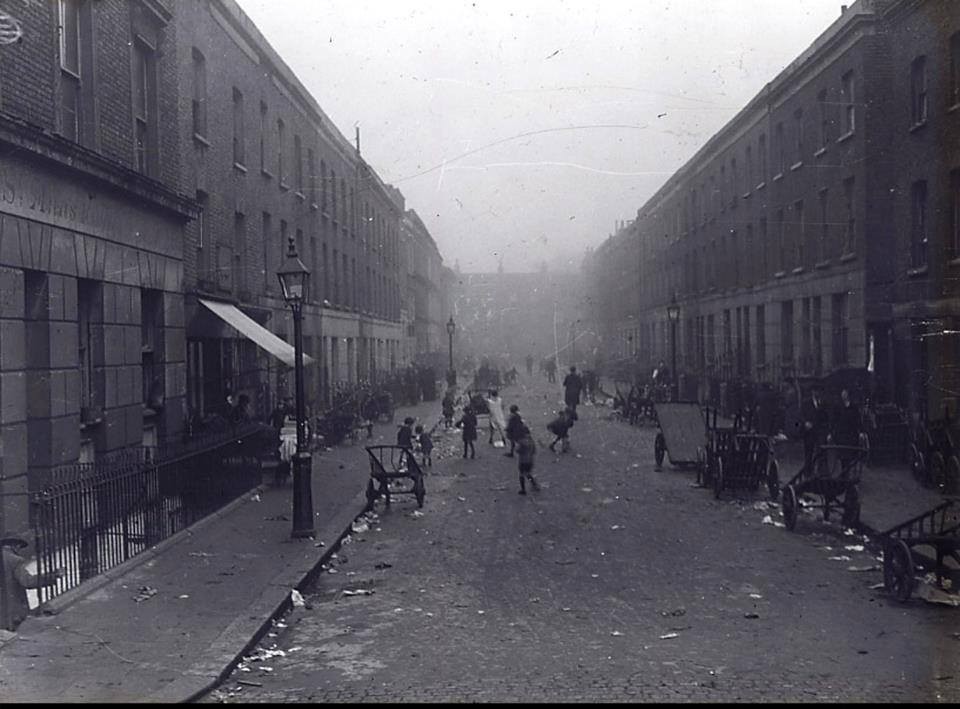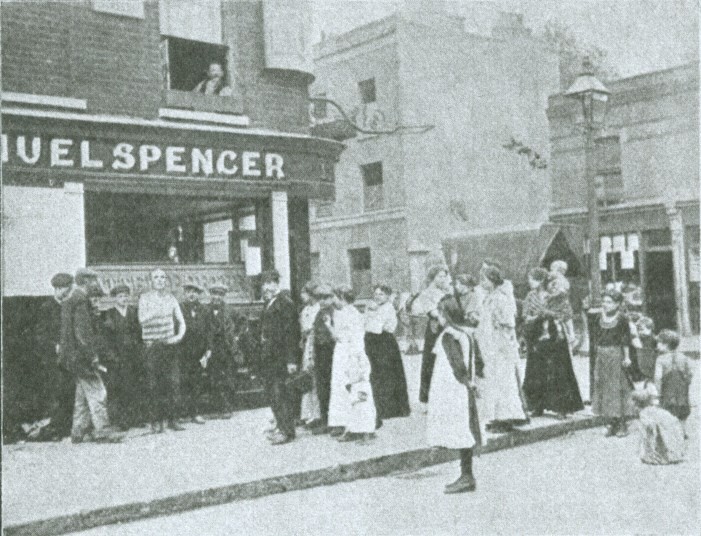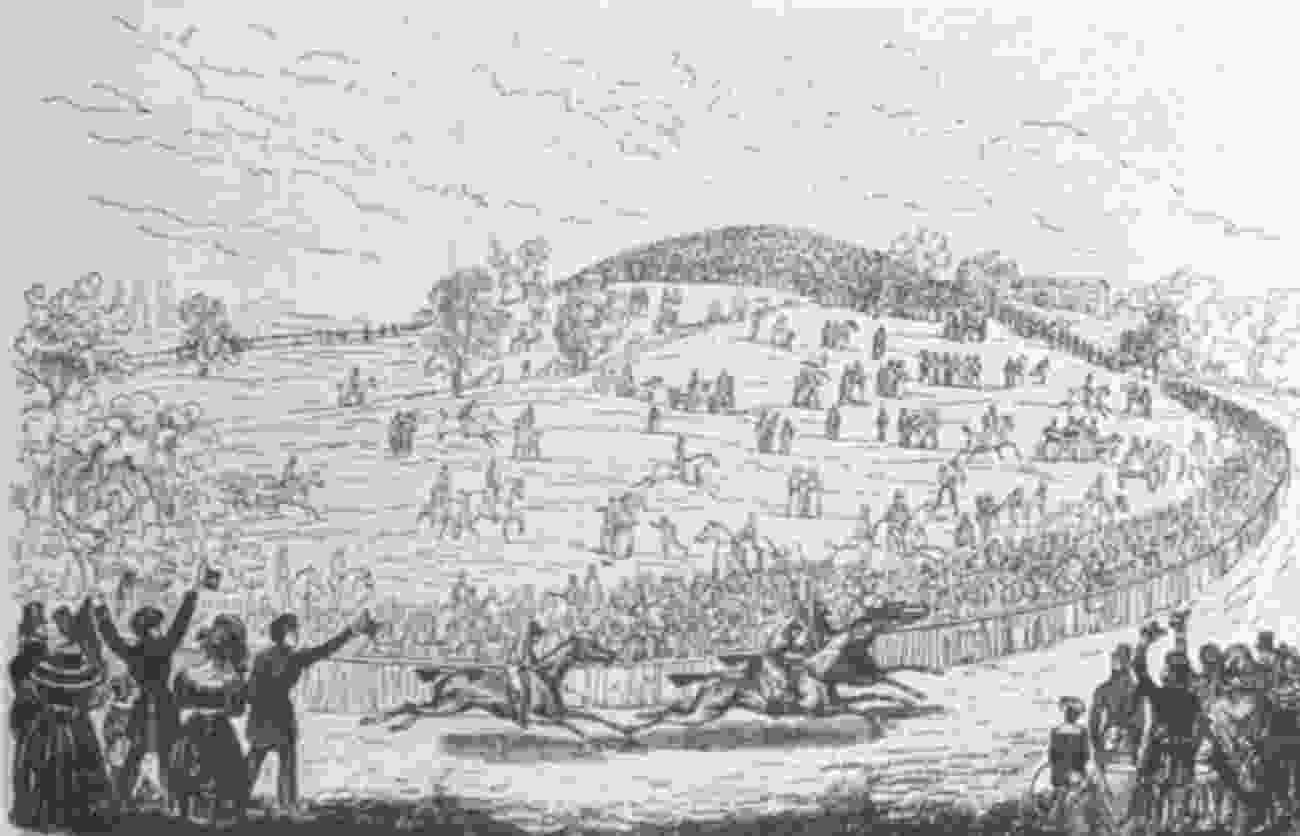
Clarendon Road, W11
Road in/near Notting Hill, existing between 1845 and now.
 | Clarendon Road, W11 Road in/near Notting Hill, existing between 1845 and now. |
| HOME | · | ARTICLE | · | MAPS | · | STREETS | · | BLOG | · | CONTACT US |
| MAP YEAR: | 1750 | 1800 | 1810 | 1820 | 1830 | 1860 | 1900 | 1950 | 2024 | Show map without markers |
| Use the control in the top right of the map above to view this area on another historic map | ||||||||||
| Main source: | Ladbroke Association |
| Further citations and sources |
| Click here to explore another London street We now have 666 completed street histories and 46834 partial histories Find streets or residential blocks within the M25 by clicking STREETS |
| CONTRIBUTIONS TO THE LOCALITY |
  Ken Herlingshaw Added: 17 Jun 2023 18:35 GMT | Clarendon Road - post WW2 I used to live at 62 Clarendon Road, from about 1947 to 1956. It was one of four prefabs on the site, numbers 60, 60A, 62 and 62A. The original building there (on the corner with Lansdowne Rise) was bombed during WW2. Prefabs weren’t very popular with the up-market Kensington Borough councillors, however, and at the earliest opportunity they were demolished and we were moved to Henry Dickens Court. We inherited a telephone line from the original occupier, a band leader, when we moved into the prefab and the phone number was BAYswater 0050. But we didn’t know anybody else with a phone to call. Reply |
  mh Added: 21 Jun 2023 12:15 GMT | Clarendon Road, W11 Interesting.... Reply |
  Roy Batham Added: 7 Jan 2022 05:50 GMT | Batham Family (1851 - 1921) I start with William Batham 1786-1852 born in St.Martins Middlesex. From various sources I have found snippets of information concerning his early life. A soldier in 1814 he married Mary Champelovier of Huguenot descent By 1819 they were in Kensington where they raised 10 children. Apart from soldier his other occupations include whitesmith, bell hanger and pig breeder. I find my first record in the 1851 English sensus. No street address is given, just ’The Potteries’. He died 1853. Only one child at home then George Batham 1839-1923, my great grandfather. By 1861 he is living in Thomas St. Kensington with his mother. A bricklayer by trade 1871, married and still in Thomas St. 1881 finds him in 5,Martin St. Kensington. 1891 10,Manchester St. 1911, 44 Hunt St Hammersmith. Lastly 1921 Census 7, Mersey St. which has since been demolished. Source: Batham/Wiseman - Family Tree Reply |
  Joan Clarke Added: 2 Feb 2021 10:54 GMT | Avondale Park Gardens My late aunt Ivy Clarke (nee Burridge) lived with her whole family at 19 Avondale Park Gardens, according to the 1911 census and she was still there in 1937.What was it like in those days, I wonder, if the housing was only built in 1920? Reply |
  ken gaston Added: 16 Jan 2021 11:04 GMT | Avondale Park Gardens My grandmother Hilda Baker and a large family lived in number 18 . It was a close community and that reflected in the coronation celebration held on the central green . I grew up in that square and went to school at Sirdar Road then St. Clements it was a great place to grow up with a local park and we would also trek to Holland Park or Kensington Gardens .Even then the area was considered deprived and a kindergarden for criminals . My generation were the first to escape to the new towns and became the overspill from London to get decent housing and living standards . Reply |
  Norman Norrington Added: 28 Dec 2020 08:31 GMT | Blechynden Street, W10 I was born in Hammersmith Hospital (Ducane Rd) I lived at 40 Blecynden Street from birth in 1942 to 1967 when I moved due to oncoming demolition for the West way flyover. A bomb fell locally during the war and cracked one of our windows, that crack was still there the day I left. It was a great street to have grown up in I have very fond memories of living there. Reply |
  john ormandy Added: 20 Mar 2021 17:48 GMT | Mary Place Workhouse There was a lady called Ivy who lived in the corner she use to come out an tell us kids off for climbing over the fence to play football on the green. Those were the days. Reply |
  john ormandy Added: 20 Mar 2021 17:30 GMT | Blechynden Street, W10 Went to school St Johns with someone named Barry Green who lived in that St. Use to wait for him on the corner take a slow walk an end up being late most days. Reply |
  Norman Norrington Added: 8 Jun 2021 08:08 GMT | Blechynden Street, W10 Lived here #40 1942-1967 Reply |
  john ormandy Added: 14 Mar 2021 18:59 GMT | Avondale Park Gardens, W11 We moved to number 6 in 1950 an family still live there now. I think i remember a family name of Larter living in the house you mention also living in the Gdns were names Prior, Cannon, Parsons Clives at number 26 who i went to school with. Reply |
  Brian Lucas Added: 15 Mar 2021 16:02 GMT | Avondale Park Gardens, W11 I also lived here at No. 15 1854 then move to No. 23 The Lucas Family Reply |
  john ormandy Added: 20 Mar 2021 17:21 GMT | Avondale Park Gardens, W11 Remember the Lucas family think the eldest was about same age as me cant remember his name though seem to rember had several younger sisters may have been twins!! Reply |
  john ormandy Added: 20 Mar 2021 18:02 GMT | Avondale Park Gardens, W11 Went to that coranation party with my two younger brothers who both went to St Clements along with Alan Mullery the footballer. I went to St James before moving on to St Johns along with Alan who lived in Mary Place where we were both in the same class. Reply |
  David James Bloomfield Added: 13 Jul 2021 11:54 GMT | Hurstway Street, W10 Jimmy Bloomfield who played for Arsenal in the 1950s was brought up on this street. He was a QPR supporter as a child, as many locals would be at the time, as a teen he was rejected by them as being too small. They’d made a mistake Reply |
  Richard Added: 12 Jul 2022 21:36 GMT | Elgin Crescent, W11 Richard Laitner (1955-1983), a barrister training to be a doctor at UCL, lived here in 1983. He was murdered aged 28 with both his parents after attending his sister’s wedding in Sheffield in 1983. The Richard Laitner Memorial Fund maintains bursaries in his memory at UCL Medical School Source: Ancestry Library Edition Reply |
  Richard Added: 12 Jul 2022 21:39 GMT | Elgin Crescent, W11 Richard Laitner lived at 24 Elgin Crescent Source: Ancestry Library Edition Reply |
| LATEST LONDON-WIDE CONTRIBUTIONS TO THE PROJECT |
  Tony Whipple Added: 16 Apr 2024 21:35 GMT | Frank Whipple Place, E14 Frank was my great-uncle, I’d often be ’babysat’ by Peggy while Nan and Dad went to the pub. Peggy was a marvel, so full of life. My Dad and Frank didn’t agree on most politics but everyone in the family is proud of him. A genuinely nice, knowledgable bloke. One of a kind. Reply |
  Theresa Penney Added: 16 Apr 2024 18:08 GMT | 1 Whites Row My 2 x great grandparents and his family lived here according to the 1841 census. They were Dutch Ashkenazi Jews born in Amsterdam at the beginning of the 19th century but all their children were born in Spitalfields. Reply |
  Wendy Added: 22 Mar 2024 15:33 GMT | Polygon Buildings Following the demolition of the Polygon, and prior to the construction of Oakshott Court in 1974, 4 tenement type blocks of flats were built on the site at Clarendon Sq/Phoenix Rd called Polygon Buildings. These were primarily for people working for the Midland Railway and subsequently British Rail. My family lived for 5 years in Block C in the 1950s. It seems that very few photos exist of these buildings. Reply |
  Steve Added: 19 Mar 2024 08:42 GMT | Road construction and houses completed New Charleville Circus road layout shown on Stanford’s Library Map Of London And Its Suburbs 1879 with access via West Hill only. Plans showing street numbering were recorded in 1888 so we can concluded the houses in Charleville Circus were built by this date. Source: Charleville Circus, Sydenham, London Reply |
  Steve Added: 19 Mar 2024 08:04 GMT | Charleville Circus, Sydenham: One Place Study (OPS) One Place Study’s (OPS) are a recent innovation to research and record historical facts/events/people focused on a single place �’ building, street, town etc. I have created an open access OPS of Charleville Circus on WikiTree that has over a million members across the globe working on a single family tree for everyone to enjoy, for free, forever. Source: Charleville Circus, Sydenham, London Reply |
  Charles Added: 8 Mar 2024 20:45 GMT | My House I want to know who lived in my house in the 1860’s. Reply |
  NH Added: 7 Mar 2024 11:41 GMT | Telephone House Donald Hunter House, formerly Telephone House, was the BT Offices closed in 2000 Reply |
  Paul Cox Added: 5 Mar 2024 22:18 GMT | War damage reinstatement plans of No’s 11 & 13 Aldine Street Whilst clearing my elderly Mothers house of general detritus, I’ve come across original plans (one on acetate) of No’s 11 & 13 Aldine Street. Might they be of interest or should I just dispose of them? There are 4 copies seemingly from the one single acetate example. Seems a shame to just junk them as the level of detail is exquisite. No worries if of no interest, but thought I’d put it out there. Reply |
| LOCAL PHOTOS |









